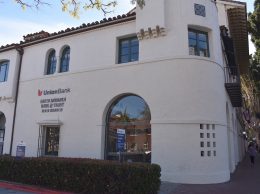UPDATE: Pacific Capital sale to close Dec. 1
IN THIS ARTICLE
- Banking & Finance Topic
- Staff Report Author
By Staff Report Wednesday, November 14th, 2012
Union Bank’s $1.5 billion acquisition of Santa Barbara Bank & Trust’s parent company is slated to close Dec. 1 now that federal regulators have signed off on the deal.
In approving the sale of Pacific Capital Bancorp with a formal order on Nov. 14, Federal Reserve officials set in motion a number of events. They include the Dec. 1 closing, which will lead to the end of Pacific Capital’s stock listing on the Nasdaq exchange and the expected sunset of the Santa Barbara Bank & Trust brand next year.
After the closing, according to a Union bank statement, shareholders will receive instructions about how to tender their shares for payment. The offering price was $46 per share, and Pacific Capital shares have been trading close to the sale price despite the recent stock market selloff.
Because Union Bank is a unit of Mitsubishi UFJ Financial Group, regulators were required to bless both the sale of Pacific Capital stock and the merger of SBB&T’s parent company into San Francisco-based UnionBanCal, the holding company for Union Bank.
In their review of the merger, Fed staffers saw some potential for deposit concentration problems in Lompoc but little else of concern.
A review of the 30-page Federal Reserve order about the merger shows that Tokyo-based Mitsubishi-UFJ Financial Group’s acquisition of Pacific Capital drew scrutiny over deposit concentration in 10 markets where the banks compete, as well as a look at loans to minorities and small businesses, and community reinvestment practices.
In the end, the Fed decided that the presence of Lompoc-based Coast Hills Federal Credit Union, the largest credit union in the Tri-Counties, and the ability of new banks to enter the market trumped any concerns about deposit concentration in the Lompoc Valley. However, a post-merger Union would control about 40 percent of bank deposits in the area or about 30 percent under a formula that accounts for the presence of Coast Hills.
Comments from several community groups raised questions about Union Bank’s minority lending practices and Community Reinvestment Act programs. In response, the Fed order cited an “outstanding” ratings for Union Bank on its most recent CRA evaluation and an evaluation of lending practices. The order said the Fed’s staff would continue to monitor minority lending and CRA activities.
When it comes to mergers, the Fed staff rated Union Bank as well managed and said the bank had successfully integrated Frontier Bank and Tamalpais Bank acquisitions.
MUFJ is the largest banking organization in Japan with assets of $2.8 trillion. After the merger, UnionBanCal will be the 17th-largest bank holding company in the U.S. with deposits of $68.6 billion. Japanese regulators already have signed off on the acquisition.
Union Bank’s parent surprised many observers earlier this year when it announced the acquisition just 18 months after turnaround experts Gerald Ford and Carl Webb put $500 million into an effort to reverse the fortunes of Pacific Capital, which had struggled through the Great Recession with mounting commercial loan losses and the dismantling of a once highly profitable tax refund loan program.
The merger will provide Union Bank with a coveted network of 45 branches between Westlake Village and the Monterey Peninsula, greatly elevating the Union Bank presence in a region that could be a rich source of deposits and loans to small and medium-sized businesses.
During 2013, Union is expected to rebrand all of the SBB&T operations to carry the Union banner. Union Bank itself was formed by the merger of two large business banks, Los Angeles-based Union Bank and San Francisco-based Bank of California.
Related Articles
Mission Wealth acquires Seattle-based firm
 Friday, September 24th, 2021
Friday, September 24th, 2021










